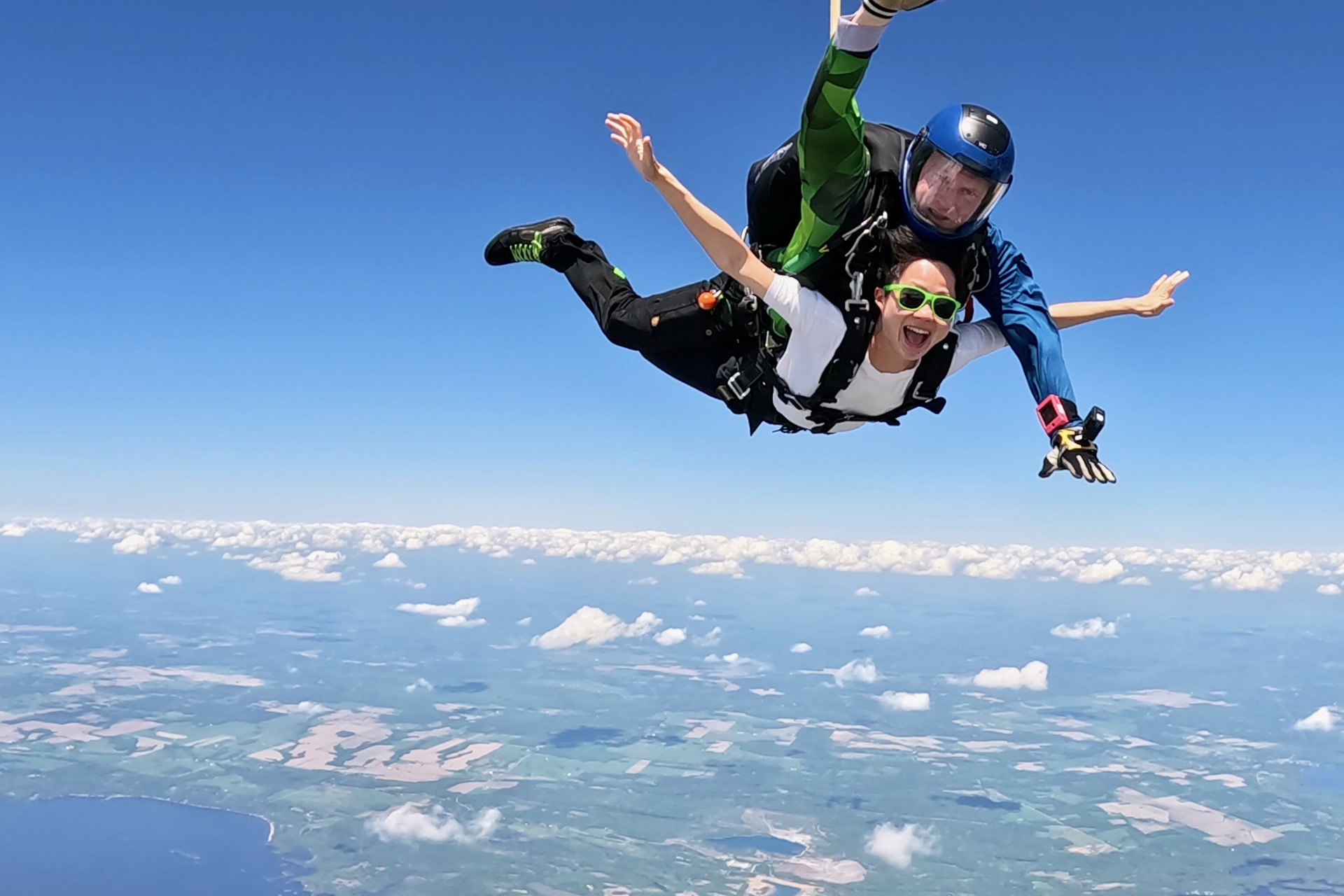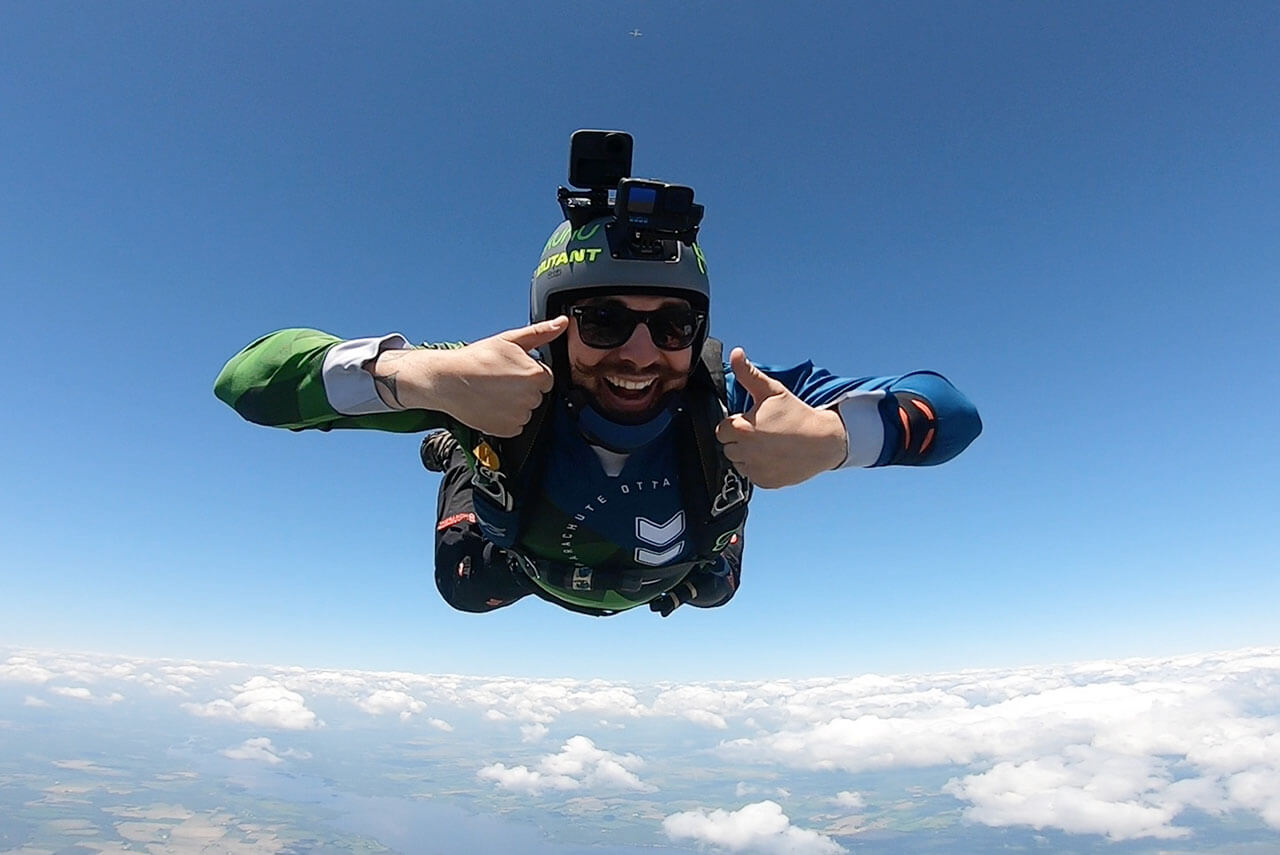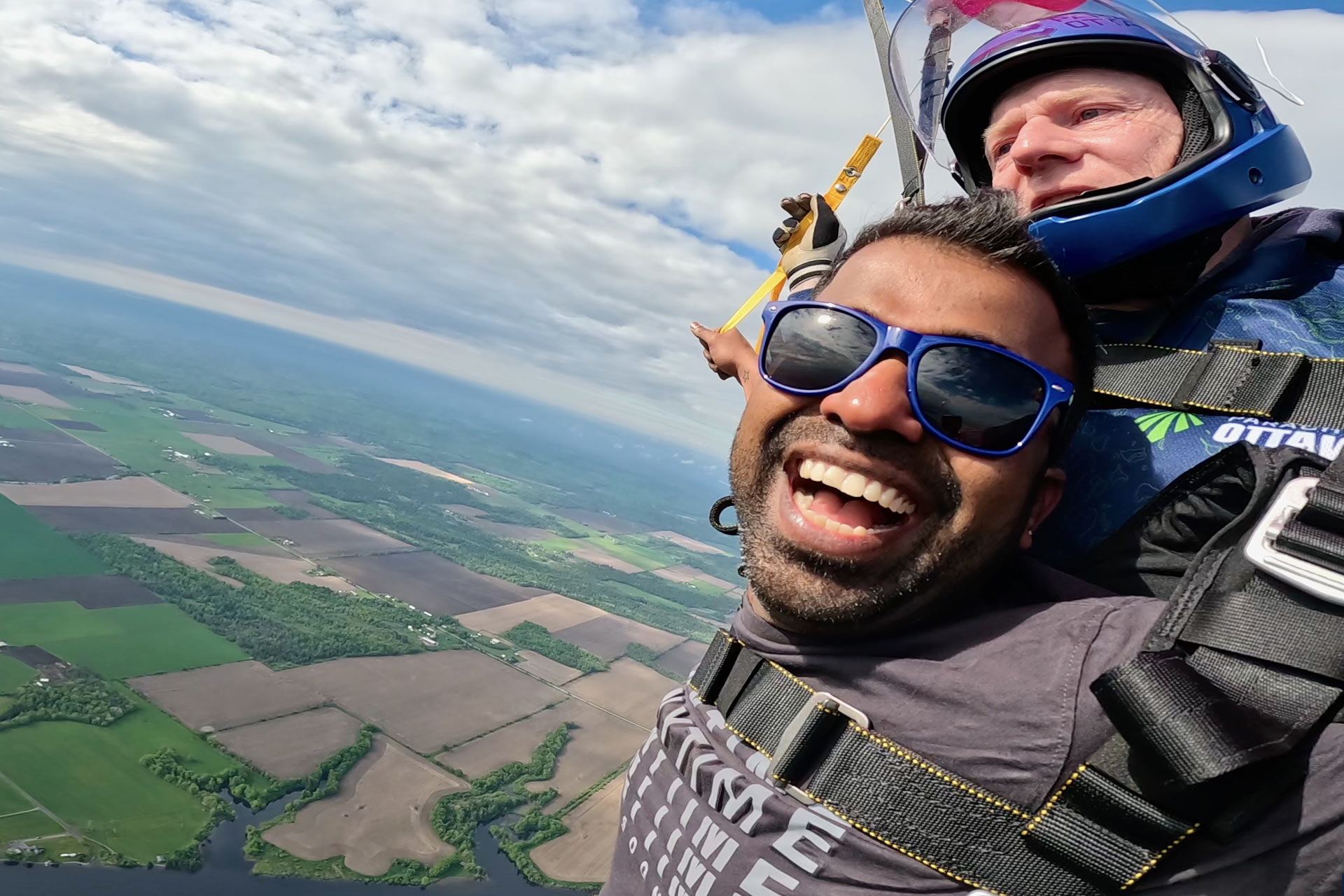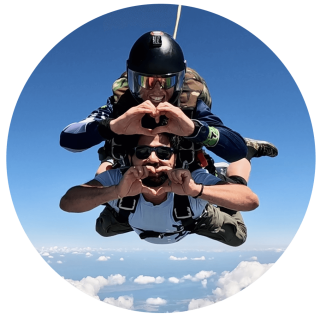Skydiving History
DZ News
Posted by: Parachute Ottawa
6 days ago
Skydiving didn’t just fall out of the sky – it evolved over centuries of imagination, experimentation, and eventually, innovation. The history of skydiving runs deep. From sketches in a notebook to massive group formations in freefall, the story of skydiving is wild, winding, and pretty inspiring. In this article, we’ll take a closer look at the skydiving history timeline, from its earliest beginnings to the modern sport we know today.

Jumping Before Planes Existed
If we start with the parachute history timeline, we can go back pretty far. Parachuting, or at least the idea of slowing a fall through the air, has been around for centuries. The earliest history of parachutes dates back to the 12th century, when Chinese acrobats used parachute-like devices for court performances.
In 1483, Leonardo da Vinci sketched a pyramid-shaped parachute he believed could allow someone to descend safely from any height. His design wasn’t built during his lifetime, but modern recreations have proven that it would have worked, which is why some credit da Vinci with the first parachute invention.

Fast forward to 1797, a French balloonist named André-Jacques Garnerin performed what many consider to be the first skydive. He jumped from a balloon, 3,000 feet over Paris, under a silk parachute without a rigid frame. It was far from smooth, but it worked, setting the stage for what would eventually become modern skydiving.
So, who invented skydiving? It depends on how you define it. Da Vinci may have imagined it, but Garnerin was the first person to parachute from a balloon. Another contender is Charles Broadwick, whose contributions we’ll explore next. While no single person can claim full credit, these pioneers pushed the idea forward until it evolved into the sport we know today.

The Birth of Freefall and Static-Line Jumps
In the early 1900s, parachuting moved from spectacle to innovation. Charles Broadwick developed the static-line system, which allows parachutes to automatically deploy upon exiting the aircraft. This technique is still used today in military and student training.
His protégé, Georgia “Tiny” Broadwick, is another credited as the first skydiver. She made history twice – first in 1913, as the first woman to jump from a moving aircraft, and then in 1914, when she became the first person to perform a true freefall jump. During a demonstration for the U.S. Army, her static line became entangled. Thinking fast, she cut it and manually deployed her parachute, proving that jumpers could take control of their own descent.
That moment marked a turning point. The skydiving origin as we know it, involving both freefall and canopy descent, had officially begun.
When Did Skydiving Become a Sport?
By World War II, parachuting became a vital military strategy. Static-line jumps were used to deploy thousands of paratroopers into combat zones, helping to refine the gear, training, and techniques we use today.
After the war, many paratroopers returned home and continued jumping recreationally using surplus gear. What began as a way to relive the thrill slowly turned into a structured civilian sport.
By the 1960s, people started skydiving for fun. Lighter equipment, more reliable canopies, and a generation of thrill-seekers helped transform parachuting into a recreational sport
Canada’s Contribution: Progressive Freefall and Coaching Innovation
Canada’s contribution to skydiving was formalized in 1956 with the creation of the Parachute Club of Canada, which in 1967 became the Canadian Sport Parachuting Association (CSPA). The CSPA continues to guide the sport’s growth across the country, overseeing safety standards, instructor training, and licensing.

By the late 1970s and early ’80s, Canada was at the forefront of skydiving innovation. Canadian skydivers Rob Laidlaw and Mike Zahar helped develop the Progressive Freefall Program, which allowed students to experience freefall from their very first jump, guided by two instructors. This method, used here at Parachute Ottawa, gives students an immersive, hands-on path to becoming licensed skydivers.
Canada also pioneered instructor development. Through a partnership with the National Coaching Certification Program, CSPA introduced Level 1 and 2 Technical Skydiving Coach certifications, the first structured coaching program of its kind in the world.
The Tandem Revolution
Not everyone wants to learn to skydive solo, and that’s how tandem skydiving changed everything. Who invented tandem skydiving?
In the early 1980s, innovators like Bill Booth and Ted Strong developed systems to allow an instructor and student to jump together under one parachute. Booth’s three-ring release system made it possible to safely cut away a malfunctioning canopy and deploy a reserve, a foundational safety feature we still use today.

The first tandem jump on a dedicated system was made in 1983, and it quickly transformed the sport. Tandem jumps made skydiving far more accessible, allowing everyday people to experience freefall without significant training.
Tandem skydiving was immediately accepted into Canada’s sport parachuting framework. In contrast, the United States only permitted tandem jumps under Federal Aviation Administration exemptions for “experimental test jumpers” until 2001.
Today, tandem skydiving is the most common first-jump method, and it’s how many guests at Parachute Ottawa first fall in love with the sport.
Skydiving Today
Today, skydiving is about more than adrenaline. It’s a multi-faceted sport, a lifestyle, a career path, and a way to connect with people around the world. Whether you’re aiming to earn your license or just want to cross something epic off your bucket list, the sky’s not the limit, it’s only the beginning.

Ready to Make History Yourself?
From ancient sketches to world records, skydiving has always been about pushing boundaries, and now it’s your turn. Whether you’re booking your first tandem, thinking about getting licensed, or just curious about what it feels like to fly, there’s a place for you in this story! Come jump with us at Parachute Ottawa and be part of the next chapter in skydiving history.
And if you want to make your jump even more memorable, World Skydiving Day is coming up on July 13th! It’s a global celebration of the sport, and the perfect excuse to finally take the leap! Of course, you don’t have to wait for a special day, every jump is a milestone worth celebrating. Book today!
Categories:
You May Be Interested In:

Skydiving Age Limit: How Old Do You Have to Be to Go Skydiving?
1 month ago by Parachute Ottawa

How Do Skydivers Know Where to Land?
2 months ago by Parachute Ottawa

Understanding the Skydiving Student Program Pathway
3 months ago by Parachute Ottawa

Skydiving Anxiety and How You Can Prepare
4 months ago by Parachute Ottawa

